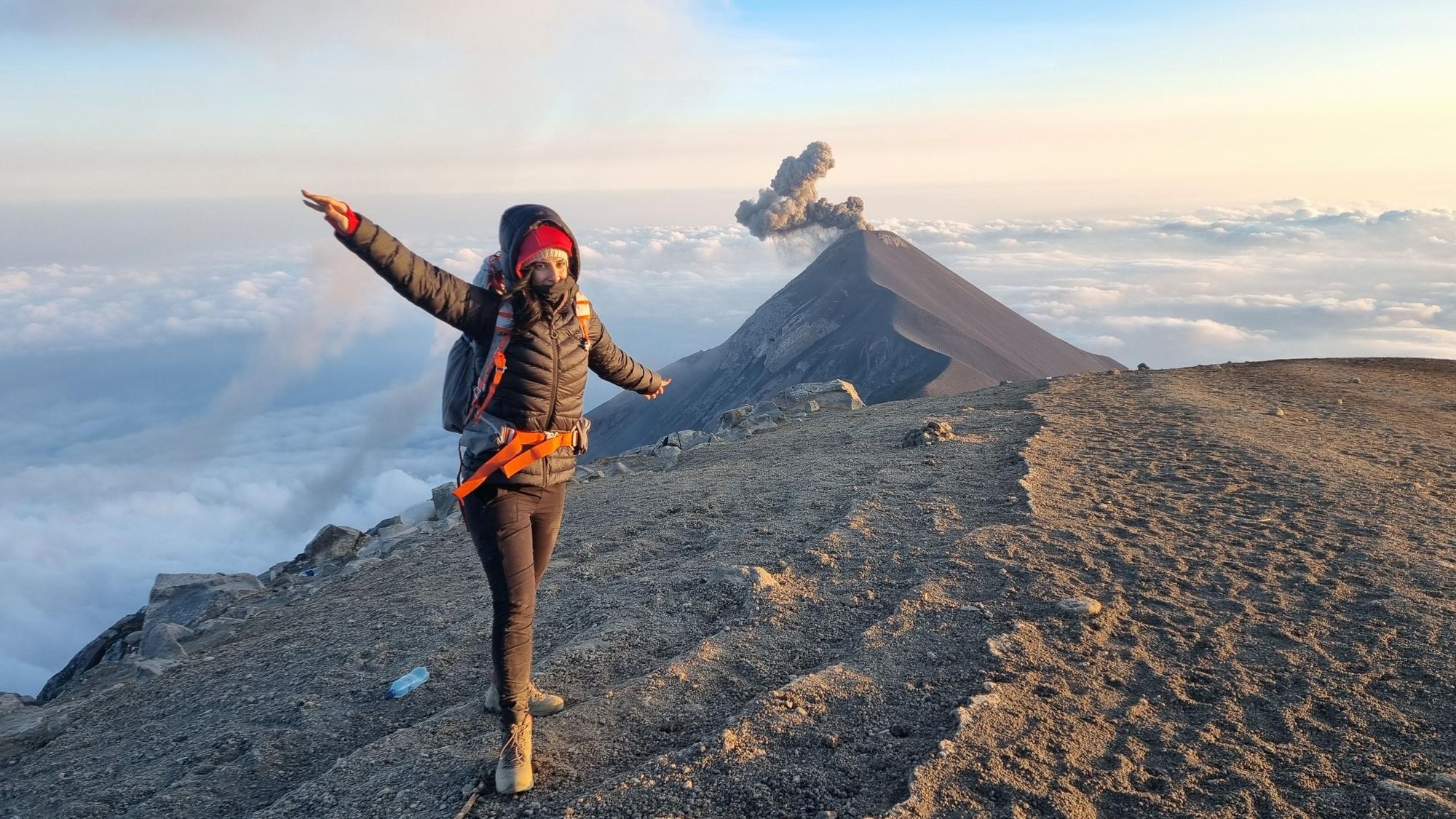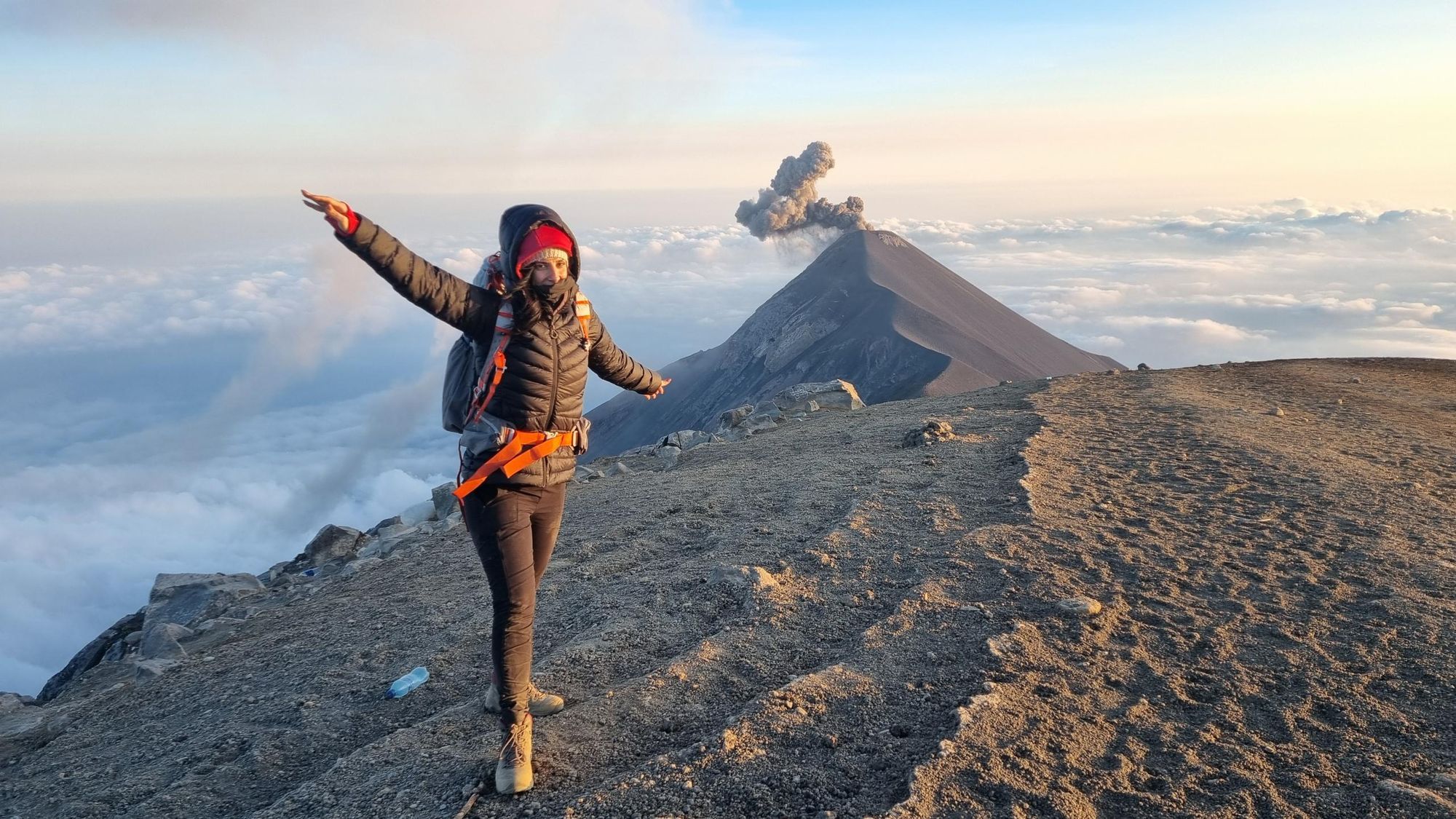
The overnight trek to the summit of Acatenango Volcano (3,976m) is one of the most popular hikes in Guatemala - for very good reason. For Marta Marinelli, Adventure Expansion Manager at Much Better Adventures, climbing Acatenango was the highlight of her recent trip to Guatemala.
“The best part of the hike is that you get to see the active explosions and eruptions of the neighbouring volcano, Fuego,” Marta says. “You've got amazing views from both the camp, where you spend the night, and also from the summit of Acatenango. Across the trip you see Fuego in different lights - at sunset and sunrise; once it’s dark, with the lava bubbling up. You could spend days up on the mountain just watching that natural phenomenon.”
Across the trip you see Fuego in different lights - at sunset and sunrise; once it’s dark, with the lava bubbling up
Volcán de Fuego is the most active volcano in Central America. It’s known for being constantly active at a low level. There are small eruptions of gas, ash and lava roughly every 20 minutes.
Even without the views of Fuego the Acatenango hike is incredibly diverse. The route takes you through four different ecosystems: agricultural fields where local farmers harvest corn and squash; old-growth cloud forest, home to the rare Quetzal bird; high alpine forest; and the burnt black slopes of the volcano itself.
In this guide to climbing Acatenango, we discuss the route in greater detail and answer some of the most common questions about visiting the volcano in Guatemala, including what to pack and how to prepare for your trip.
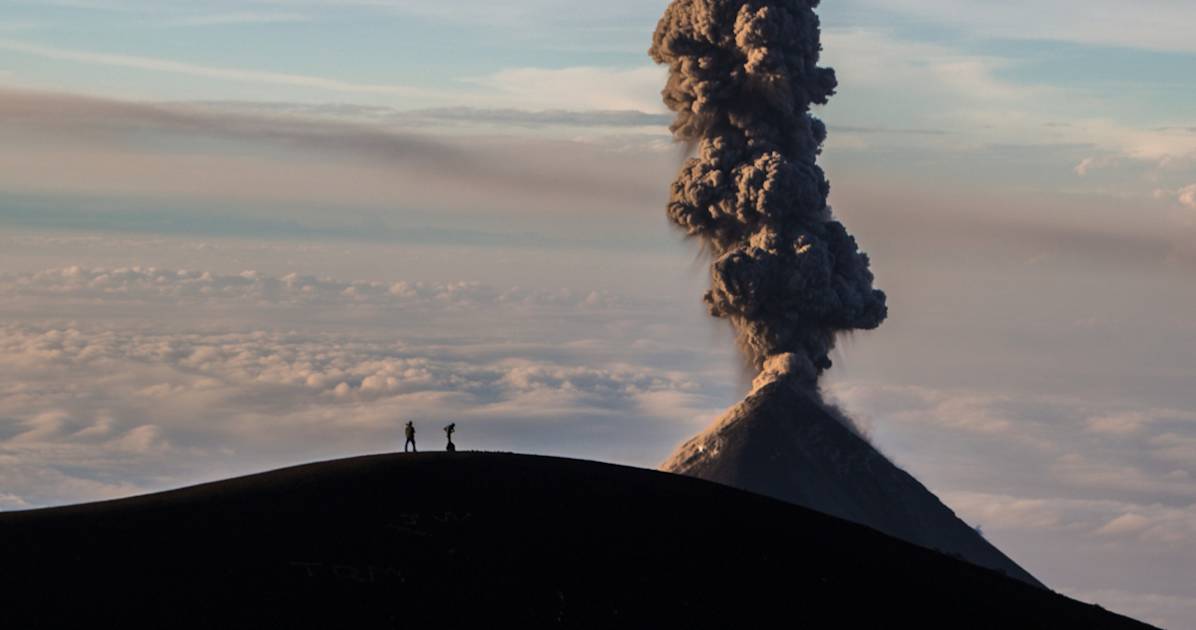
Where is Acatenango Volcano Located?
Acatenango is a stratovolcano in Guatemala, situated around 18 miles (29 km) from the UNESCO designated town of Antigua by road. It forms part of the Pacific Ring of Fire, and is also part of the Sierra Madre mountains.
Acatenango Volcano is joined to Volcán de Fuego - collectively, the two volcanoes are known as La Horqueta.
How Hard is the Acatenango Hike?
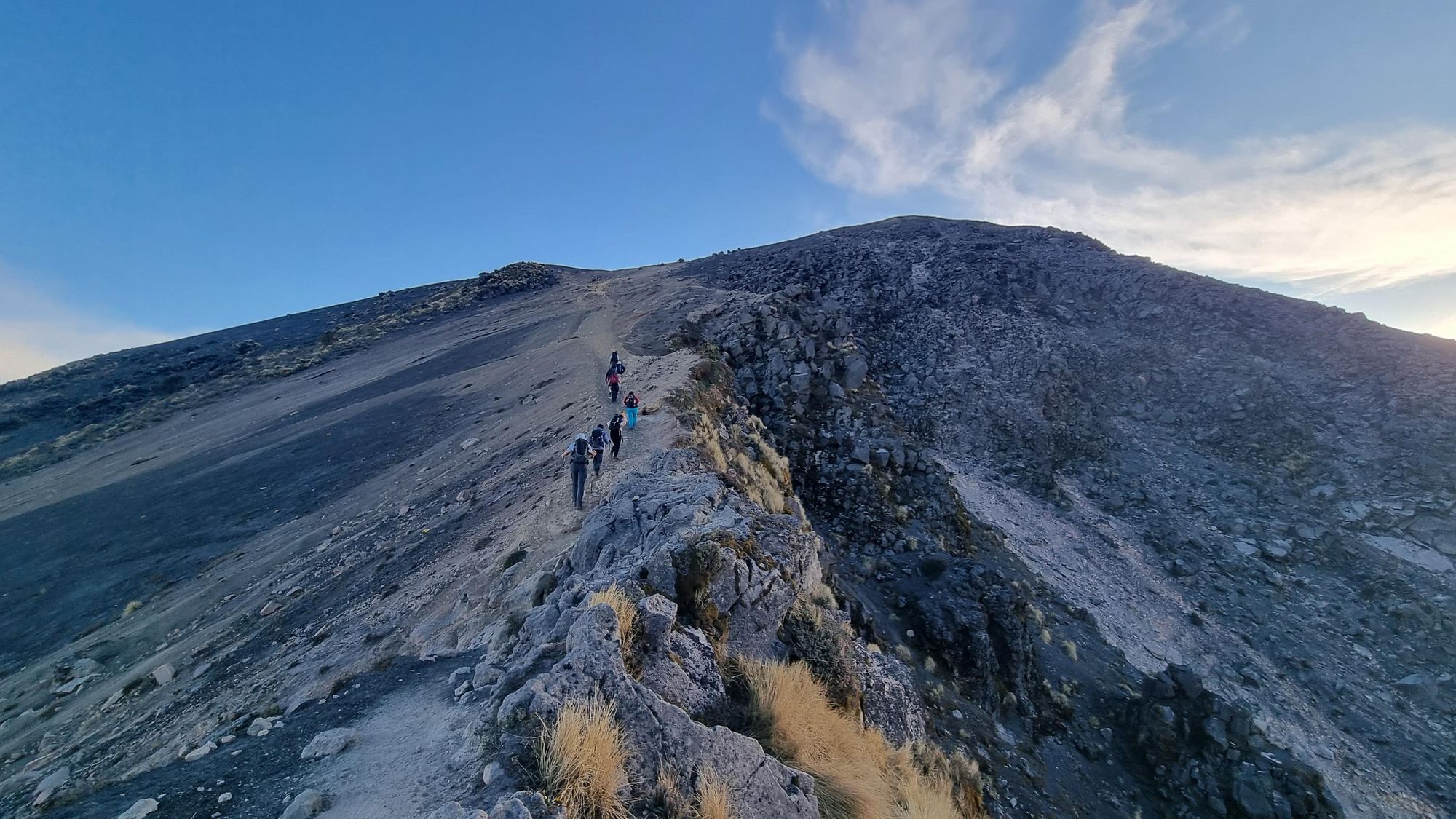
The Acatenango volcano hike takes a total of 10 to 12 hours (which most people spread over two days). It involves 1,570m of ascent and descent, climbing up to an altitude of 3,976m at the summit. So, it’s not a walk in the park, but experienced hikers with a good level of fitness will find it perfectly doable.
“I climbed Acatenango as part of the Five Volcano Challenge so I did some preparation before,” Marta says. “It was a mix of strength training, cardio training, gym training and occasional hikes - but it’s probably going to be hard to find a mountain near your place which is like Acatenango.
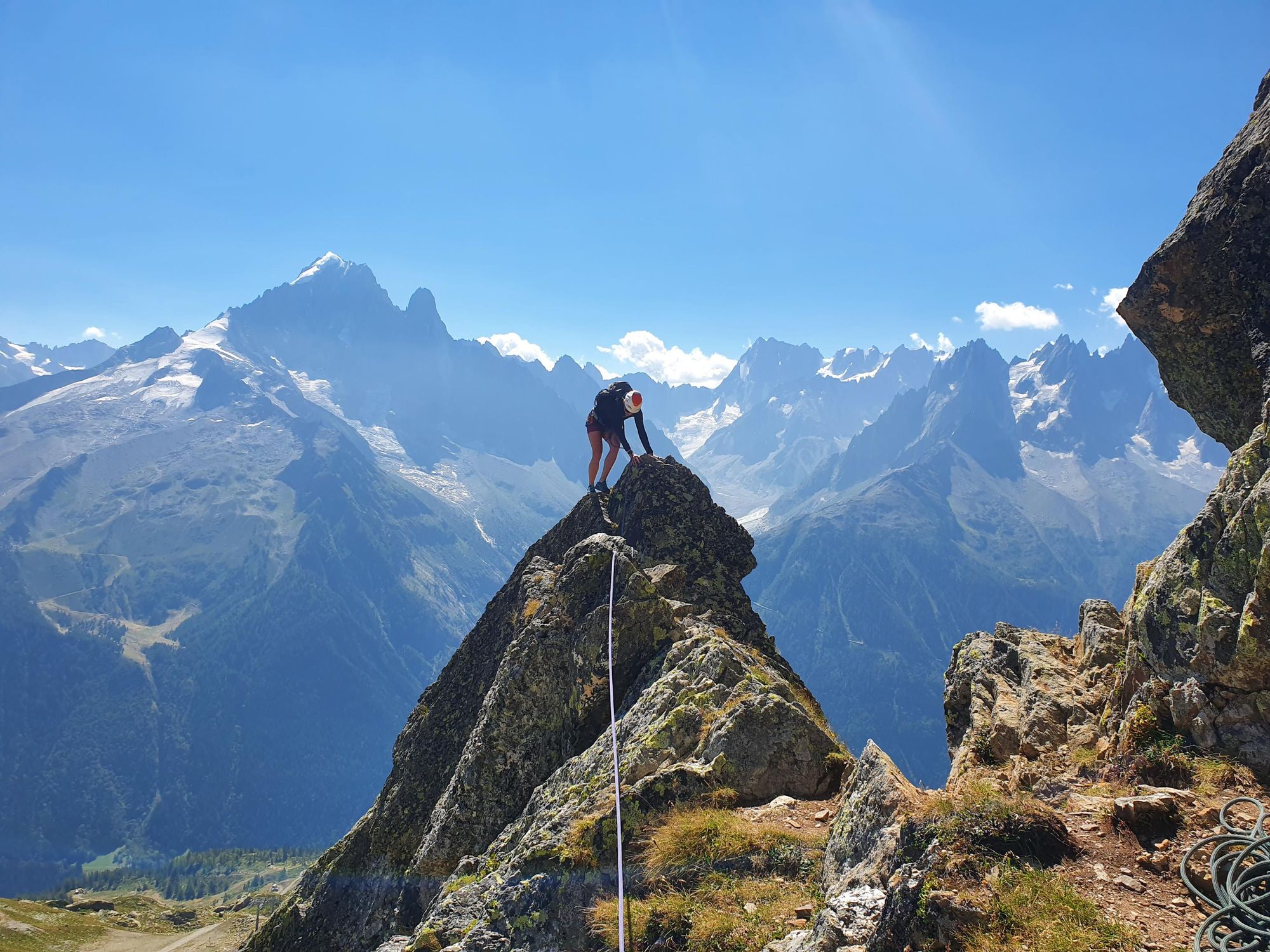
“There are several challenging sections during the hike, which will involve relentless continuous steep climbing. But normally the leader paces those so that it's a maximum 20 to 30 minutes of really hard hiking, and then you have a break. There are some gentler bits, too.
“I saw a lot of people struggling during the trek itself. You could tell that it was being attempted by people that were only occasional hikers, or hadn't put any training in. Whilst it’s doable you just suffer more, so it's just better to prepare.”
Acatenango Overnight Hike: The Route
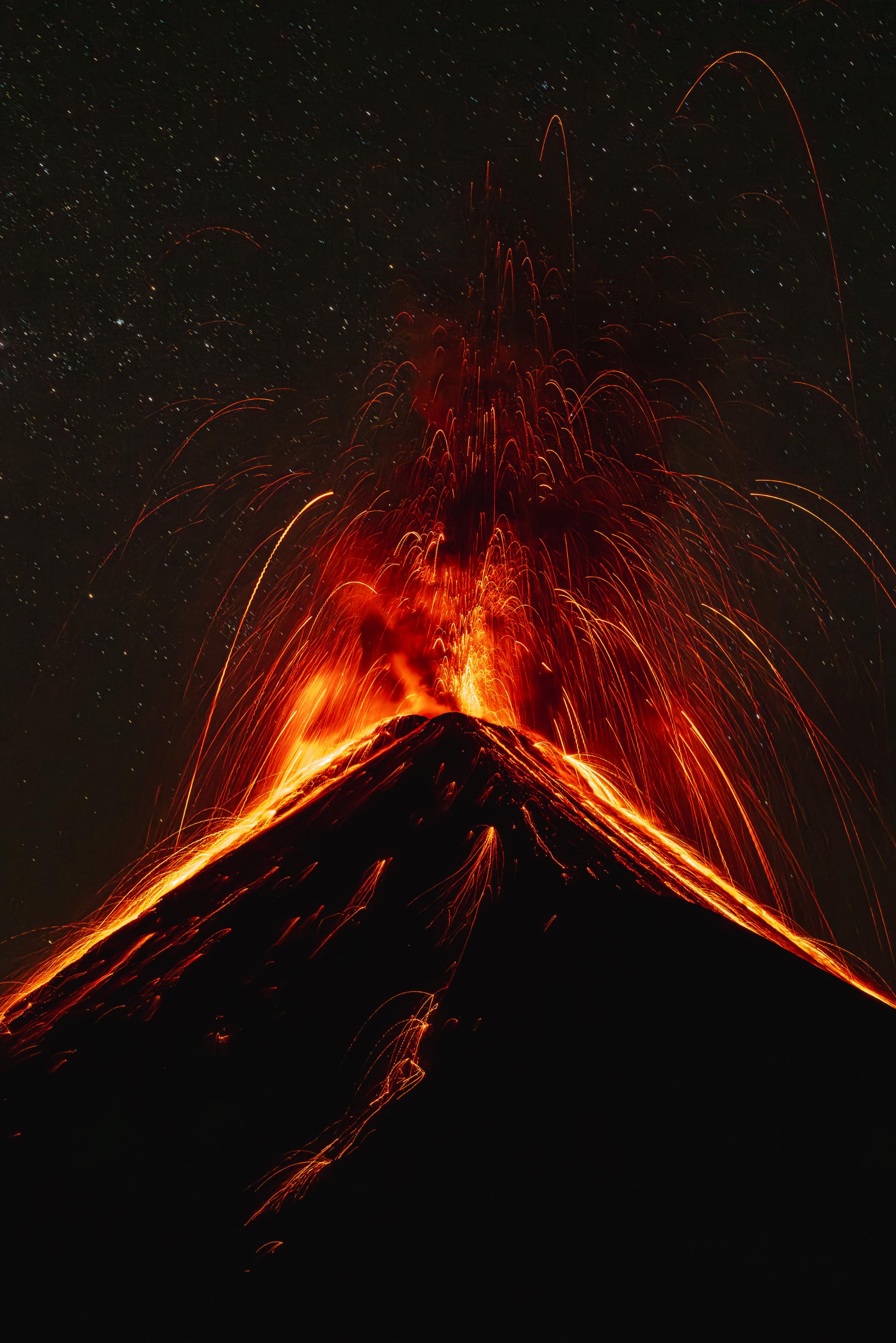
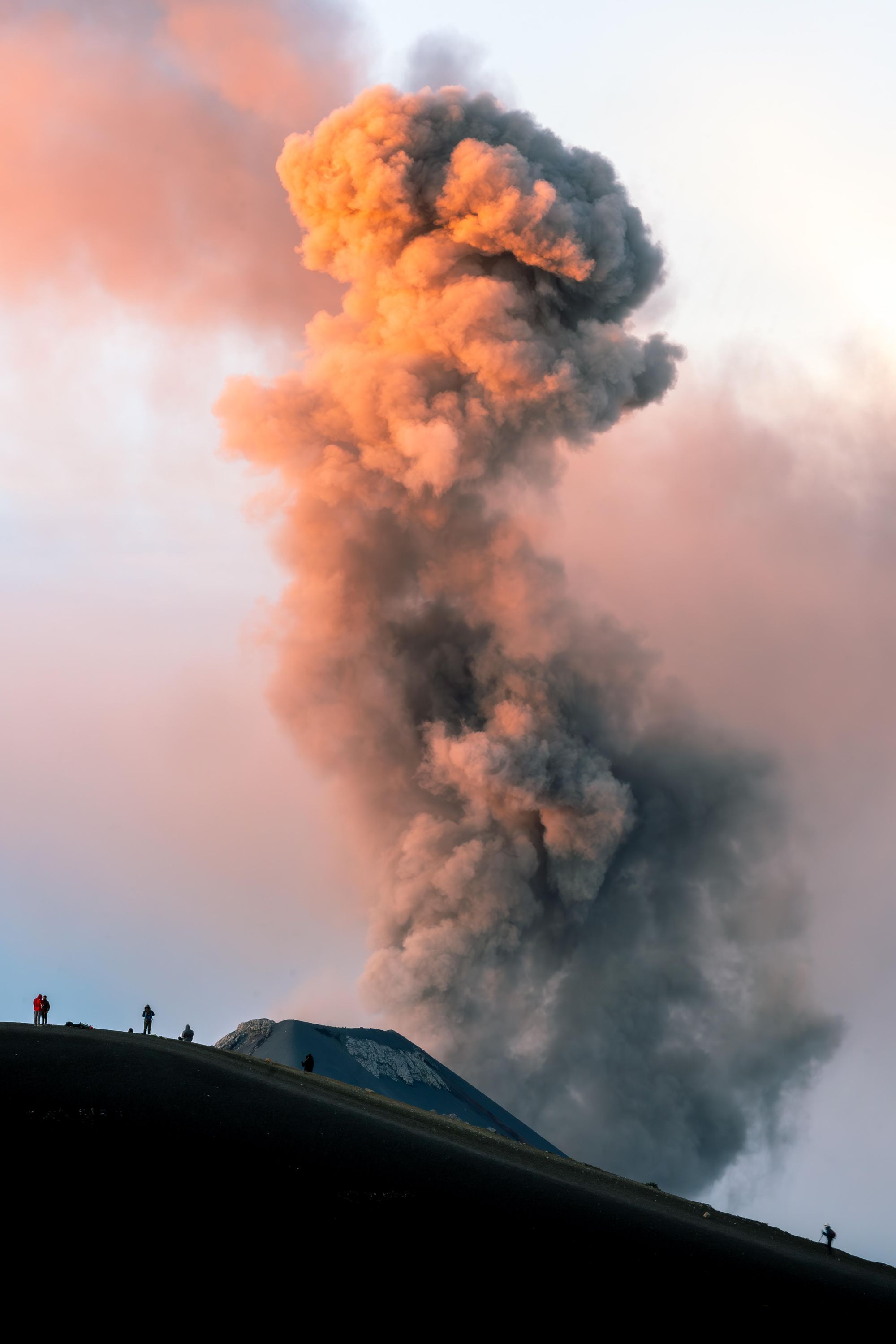
You can climb to the summit of Acatenango and back down again over a single day. However, Marta wouldn’t recommend it.
“A lot of people hike Acatenango as a day trip, without sleeping there,” she says. “But if there’s cloud cover at the summit, you won’t see Fuego, and that’s your highlight gone.”
We’ve detailed the overnight option, although it is worth noting that a few guided tours spend two nights on Acatenango - the second day will be spent hiking closer to Fuego, to the saddle between the two volcanoes, and onto a flat ridge around a kilometre away from the eruption crater (approximately a four hour round trip).
Day One: Soledad to Acatenango Base Camp
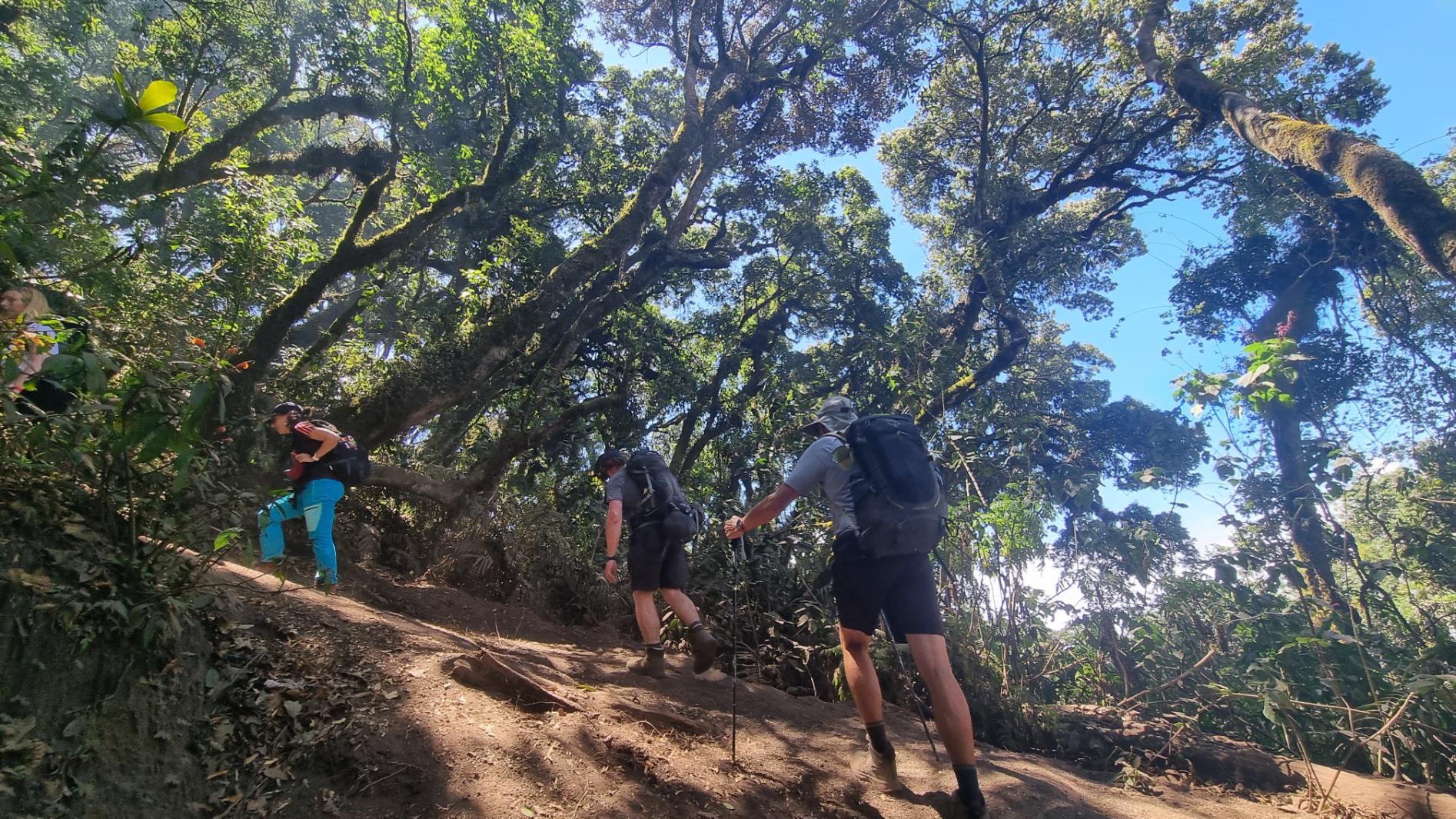
- Distance: 4.3 miles (7km)
- Total ascent: 1170m up
- Hiking time: 5-6 hours
You’ll begin your hike at the trailhead in La Soledad, a Mayan village around an hour’s drive from Antigua.
“The first part of the route is basically a gravel path through farmland, with a view of lovely green fields all around, until you get to the first rest stop, which is a cafe,” Marta says. “After that, you hit the trailhead proper. The trail winds up through forest and bushes, and nobody is prepared for the steepness - it’s continually uphill for around an hour, and includes a series of steps, which is harder than the uphill section.”
“Then the next section is through a beautiful cloud forest, which is just so serene and peaceful. You're really just focusing on listening to the rhythm of breathing, and your steps. It was quite a good experience given the suffering beforehand, just to be surrounded by all this beauty.
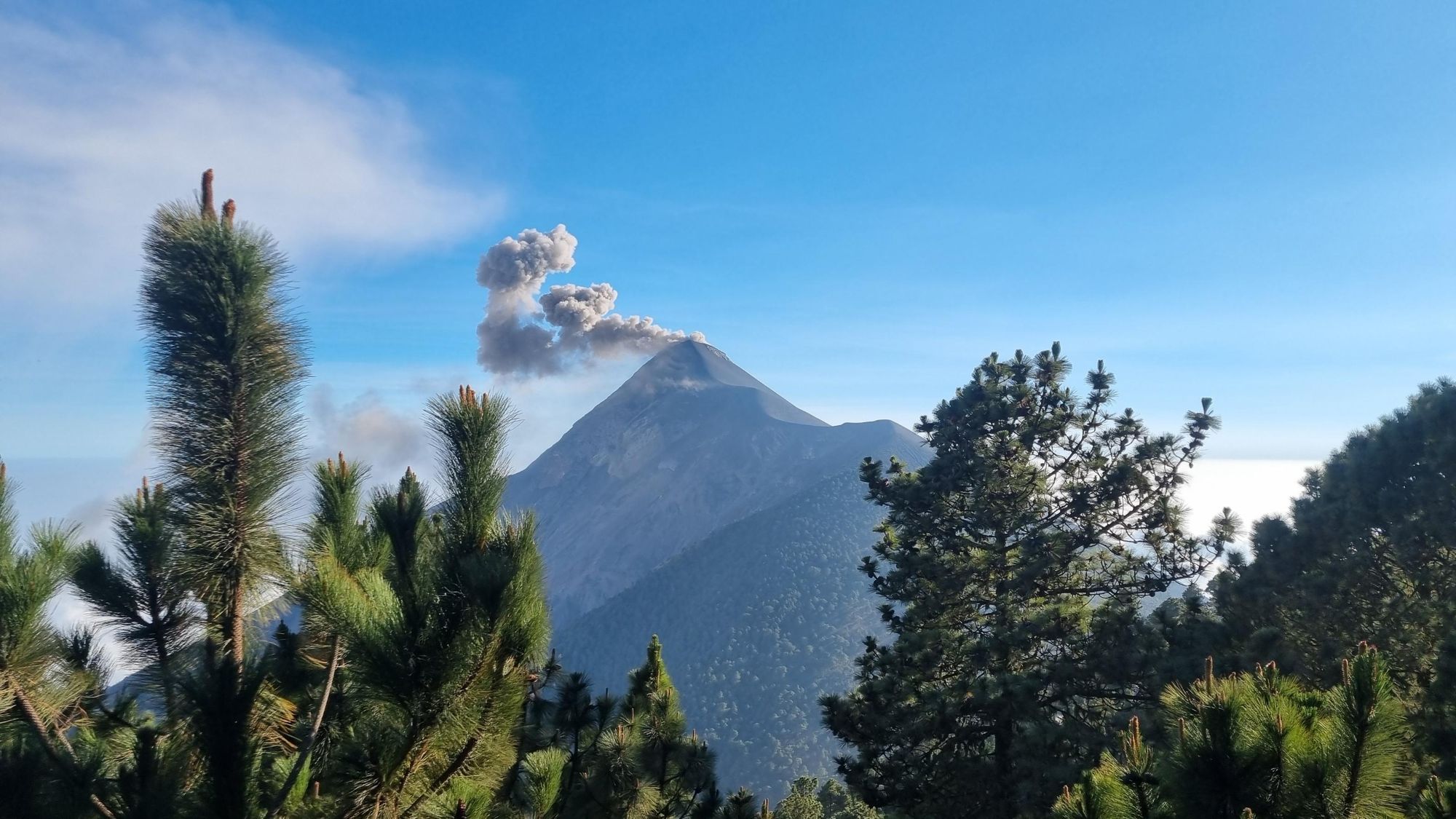
“And then, as you're out of the forest, as you approach the base camp, you start getting the first glimpse of the surrounding landscape because there are no more trees. I remember specifically this point where you just turn a corner and suddenly you have this huge volcano, Fuego, in front of you.”
You’ll set up camp in a secluded clearing just below the treeline - at an elevation of 3,750m - where you’ll be able to warm up around the campfire, and enjoy a hot dinner. You’ll also have spectacular views of Fuego Volcano, and can watch as it belches smoke, and perhaps even lava, into the sky.
Day Two: Acatenango Summit
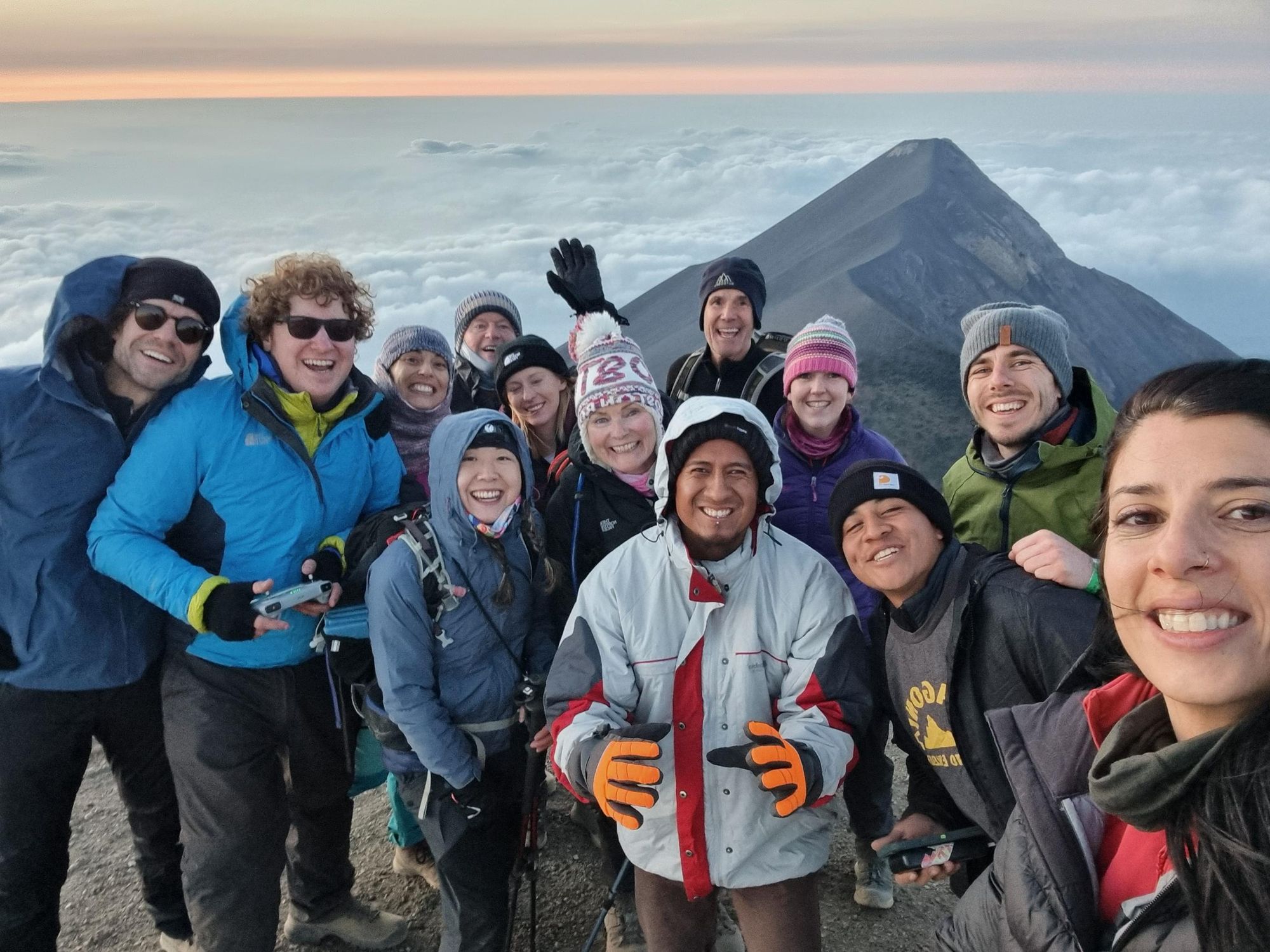
- Distance: 4.9 miles (8km)
- Total Ascent: 400m up/ 1550m down
- Hiking time: 4-5 hours
You’ll wake up early, and hike the steep, scree-covered trail to the summit of Acatenango (3,976m) - a tough uphill route which takes around an hour.
“This is probably one of the most challenging parts of the trip. You’re hiking on very difficult terrain, steep scree slopes - the sort of hiking where every step forward is a step down,” Marta says.
You’ll be rewarded with amazing views at the summit, of the sun rising over the Guatemalan highlands. On a clear day you can see all the way to the Mexican border. Then it’s time to descend.
“Your legs are tired from all the hiking the day before, so it's important not to underestimate the descent,” Marta says. “That's probably also when most accidents happen, because you can fall and your legs are tired. During the descent, gaiters are definitely recommended. They prevent sand and scree going into your boots, so you don’t have to stop every 10 minutes to empty them out.”
You’ll likely descend the volcano by a slightly different route, although you’ll end up at the same trailhead where you started.
How to Maximise Your Chances of Seeing Fuego Erupt
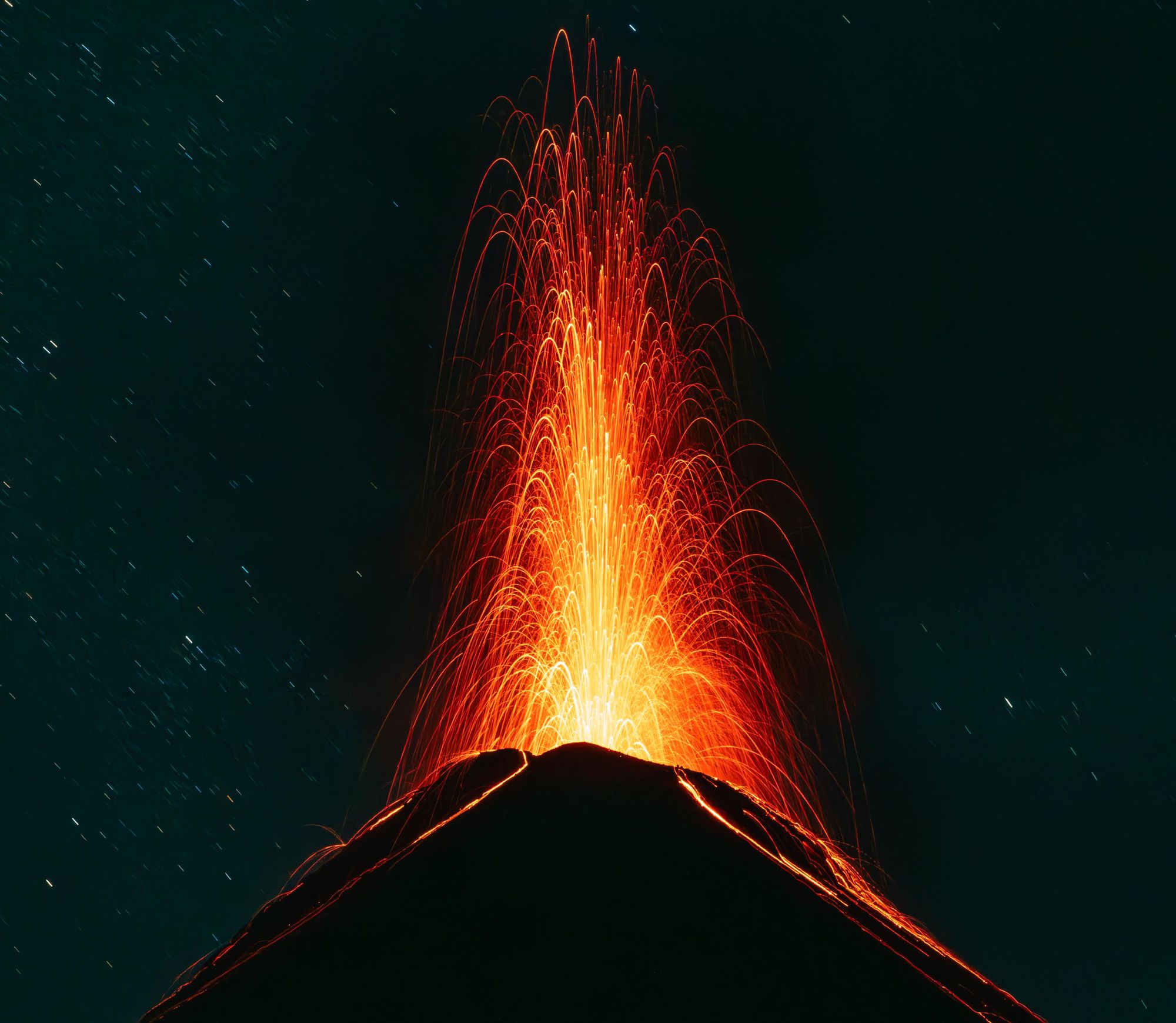
For the best chance of seeing Fuego, sign up for an overnight hike.
“Fuego is supposed to erupt every 20 minutes, but Mother Nature doesn’t run according to a schedule, so some days it’ll be quieter than others,” she says. “If it’s a quieter day, or there’s cloud cover, you might not see many eruptions on a day hike. Whereas if you camp, you'll be able to see Fuego at sunset, nighttime or the following morning.
Fuego is supposed to erupt every 20 minutes, but Mother Nature doesn’t run according to a schedule, so some days it’ll be quieter than others
“Rumour has it the best time for watching the eruption is between midnight and 2am, so some people had a sleepless night to watch the volcano. I was tucked up in my tent by then because it was so cold. But I did spend some time watching the eruptions with the tent unzipped - I could see Fuego through the open doorway.”
Camping On Acatenango
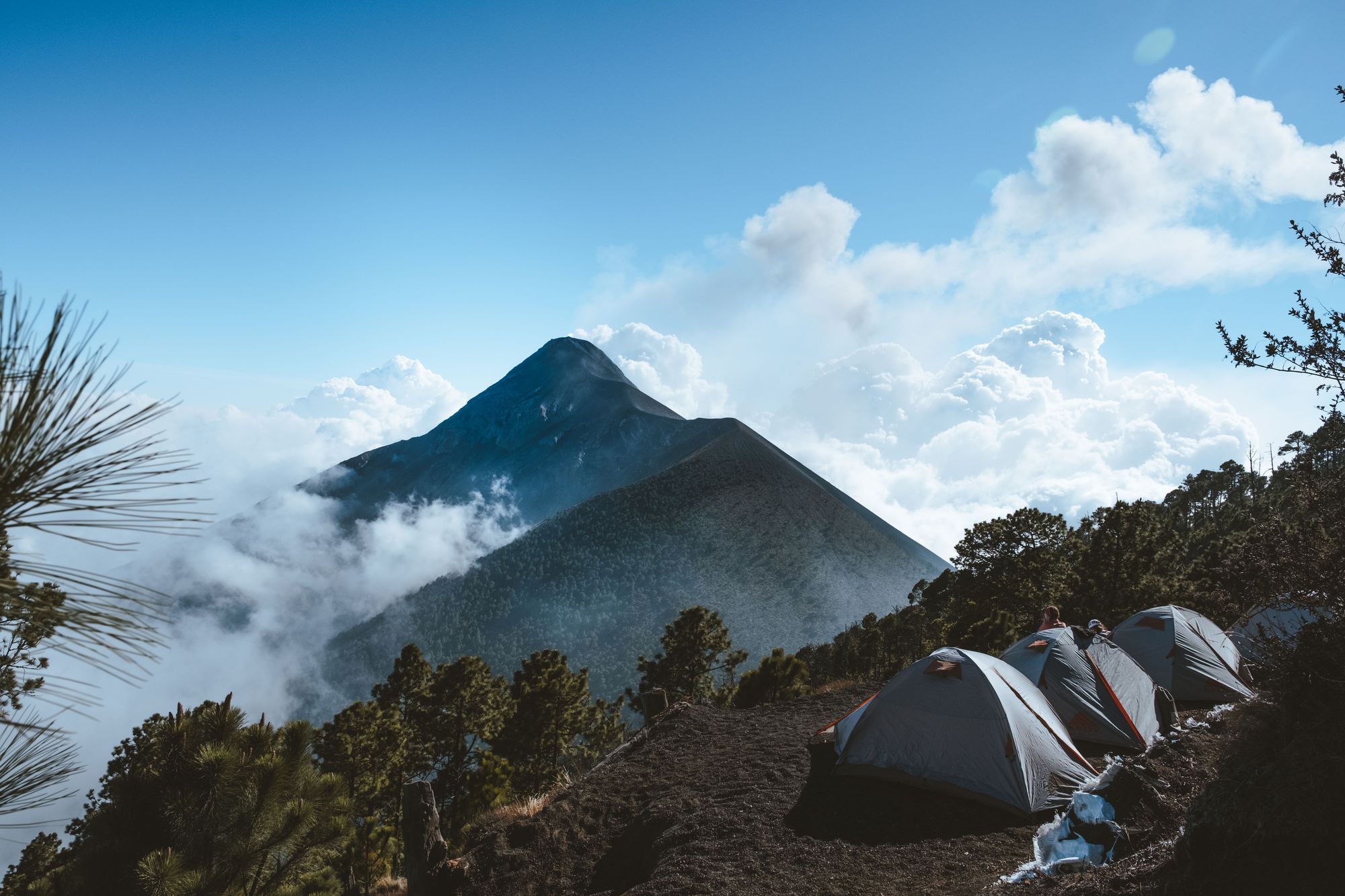
There are no huts or hotels on Acatenango, so if you choose to do the overnight hike, you’ll be camping. Most tour operators will have porters and a campsite manager, who will go on ahead of you and make sure that the campsite is set up and ready for you. It’ll be located at an elevation of around 3,750m, so nights will be cold - make sure you have a decent down jacket and some merino layers.
“The guide made a fire for the evening to keep us warm,” Marta says. “So we sat around the campfire watching the volcano. There was a larger tent where they made the food, although it wasn't big enough for us to eat in there - although it was served in a spot sheltered from the wind and the cold.
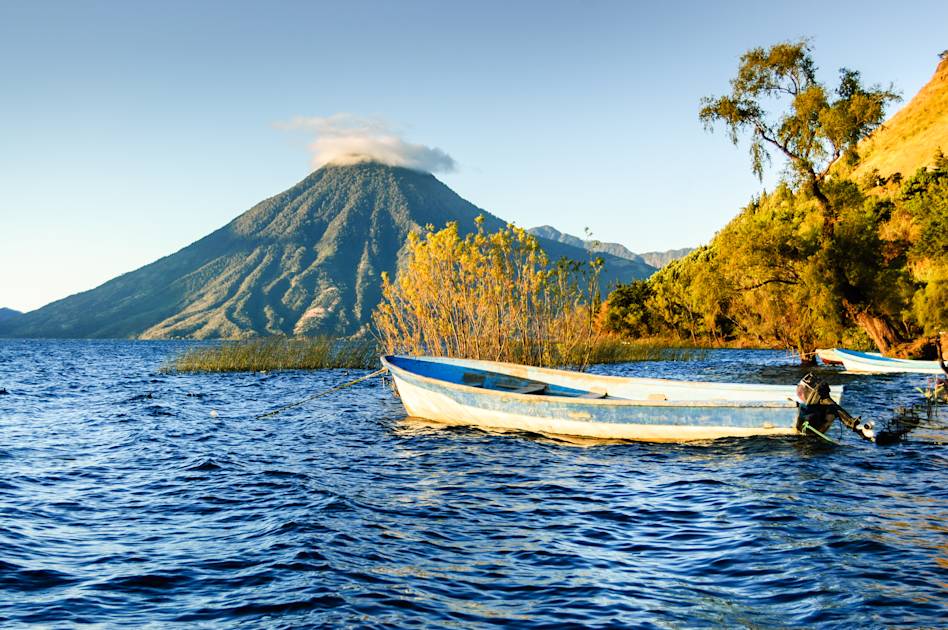
“We were also quite surprised to find out that the toilet was actually built in a cabin made out of wood. It was a long drop toilet, so quite basic, but it meant you didn’t have to dig a hole.”
The quality of your campsite is going to be dependent on the tour operator you choose. Be wary of tours offered at below market value - you’ll likely be in a much larger group, have less sustaining meals and maybe even inferior camping gear.
Do I Need a Guide to Hike Acatenango?

You don’t need a guide to hike Acatenango. The pros of travelling independently are the lower cost (although you’ll still need to pay for a private taxi to and from the trailhead - expensive as a solo traveller), and being able to go at your own pace.
However, guided trips include transportation, food, and a porter to carry your camping gear - so can be a lot more convenient. In fact, the vast majority of independent hikers to Acatenango are completing the hike over a day, rather than camping overnight - as previously mentioned, this reduces your chances of seeing Fuego erupt.
Acatenango Hike: What to Bring
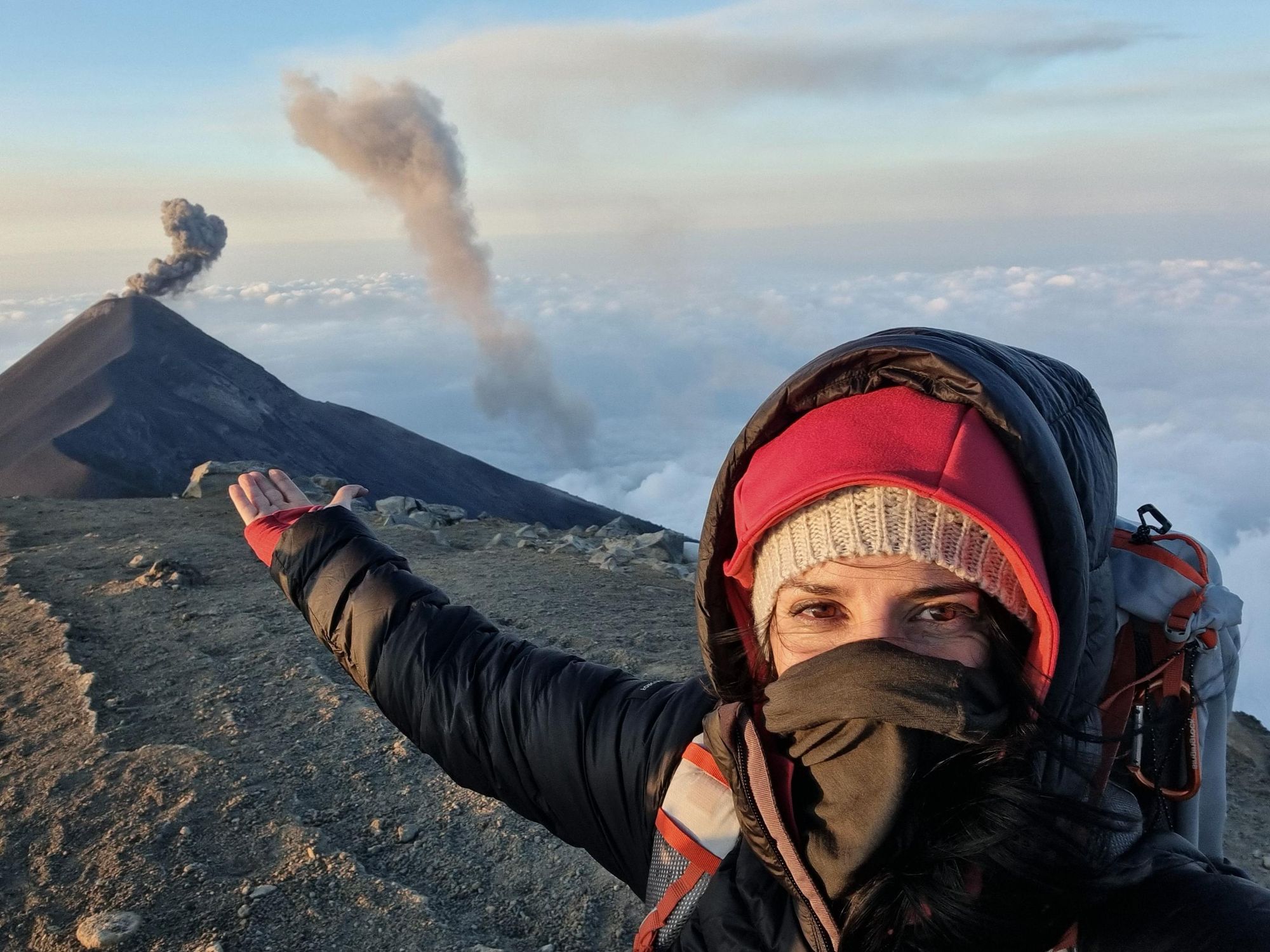
To hike Acatenango, we’d recommend bringing:
- A daypack approx. 35l+
- Down jacket
- Waterproof jacket
- Waterproof trousers
- Breathable wicking layers
- Fleece jacket or similar
- Thermals (merino is best)
- Warm hat
- Two buffs or neck scarf
- Gloves
- Sunglasses
- Sunhat
- Hiking boots (worn-in)
- Walking poles
- Gaiters
- Personal first-aid kit (inc. blister treatment)
- Personal items (biodegradable toiletries, sanitary wear etc)
- Toilet kit (toilet paper, biodegradable bags to carry out)
- Headtorch
- Reusable water bottle
For a full kit list, check out the ‘kit list’ section of our Guatemala 5 Volcano Challenge
How to Get to Acatenango
The trailhead for the Acatenango hike is located close to the village of La Soledad, which is around 18.6 miles (30km) from the city of Antigua - a drive which takes an hour. If you’re climbing Acatenango with a guide, they’ll arrange transport to and from the trailhead.
There is no public transport to La Soledad, so independent travellers will need to arrange a taxi to take them there and pick them up - or hire a car. This can be cost effective if you’re travelling in a group, but solo travellers might find it better value for money to join a group trip.
Inspired? Climb Acatenango on one of our Guatemala adventures.


